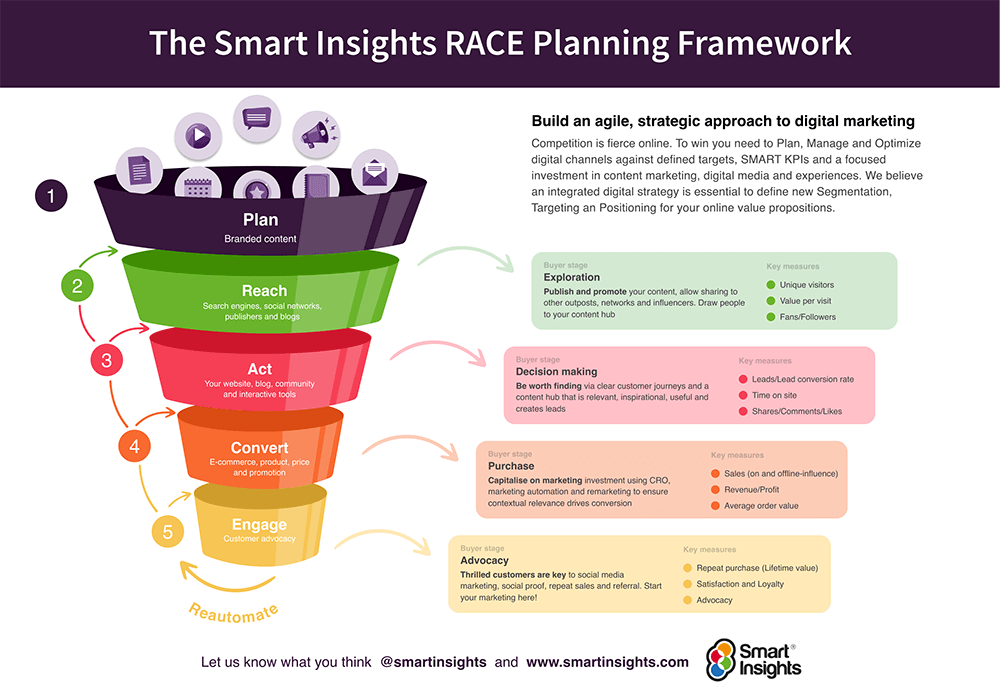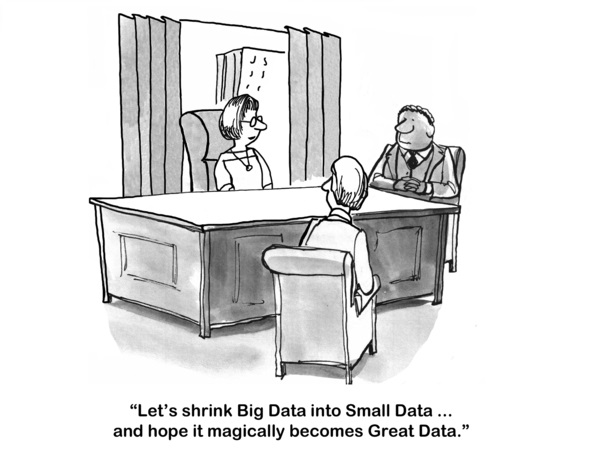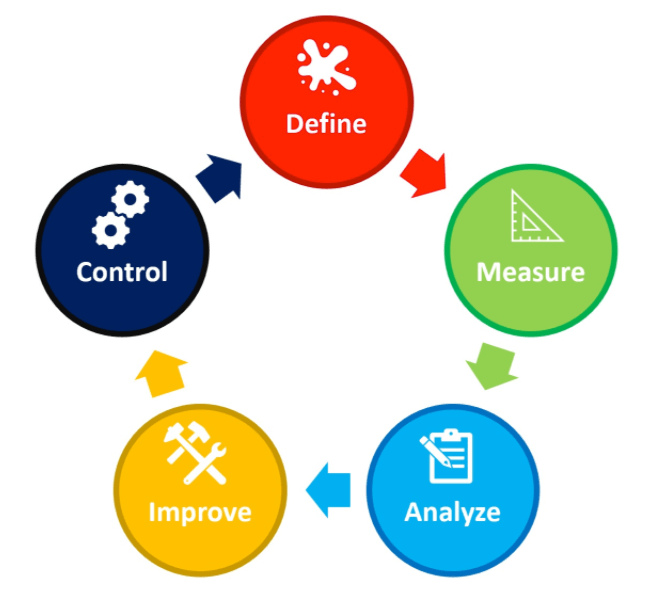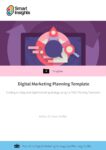Leading digital analytics experts share their examples of how to effectively use data and analytics to generate actionable insights for your marketing strategy
The number of data sources that are available is growing every day. For some of us, this might be a good thing, but for many digital marketers it brings up a lot of challenges to deal with. With increased data, it can be easy to lose focus, become obsessed by 'vanity metrics', and fail to generate actionable insights for your business.
McKinsey notes that surges in data caused by rapid digital disruption 'have not provided marketers with a substantially better understanding of their customers, because their companies’ outdated data modeling isn’t able to capture these shifts with the necessary granularity and speed'.
So, while the innovators are leading the way with actionable analytics feeding their data-driven marketing, others become stagnant. In today's competitive marketing landscape, this means losing market share, and customers, to your competitors. You don't want that, that's why we've got 10 tactics to help get you back on track.
Unlock actionable, practical strategy with the RACE Framework
Although we all know we need to start using data in a smarter way, it can be hard to know where to start! McKinsey warns that for companies to take advantage in the digital era, businesses will need to 'update their modeling—from pulling in new sorts of data to retraining algorithms—in order to both keep pace with changing needs and expectations as well as anticipate shifts in customer behavior'.
That's where our RACE Framework comes in. The RACE Framework empowers markers and managers to break down their customer journey across the 5-step RACE structure of plan - reach - act - convert - engage.
Within each stage, we will guide you to set objectives, and measure the metrics and KPIs necessary to achieve your goals. You can download your free digital marketing plan template to get started today.

Free digital marketing plan template
Our popular marketing planning template is structured across the Smart Insights RACE Framework. Join Smart Insights as a Free Member to download our digital marketing plan template today
Access the Free digital marketing plan template
Reporting vs. analysis
The job of a digital marketer and analyst is not to come up with a lot of fancy-looking reports that contain tons of data. In my opinion, data is just input. The insights you provide should be your most important output.
When you have mastered numbers, you will in fact no longer be reading numbers, any more than you read words when reading books. You will be reading meanings.
~ W.E.B. Du Bois
You need to answer what the numbers mean to your business and what action should be taken to improve the most important metrics of the business.
Turn data into actionable insights
I have worked with many companies that really got stuck here. Being able to collect the right data is one thing, but making it extremely useful requires a different skill- and mindset.
Being able to collect the right data is one thing, but making it extremely useful requires a different skill- and mindset.
We've got marketing solutions to help you boost your use of data and analytics to inform your marketing strategy. Our marketing tools and templates are integrated across the RACE Framework, so you can apply a data-driven approach to planning, managing, and optimizing your customers' journeys.
Free digital marketing plan template
Our popular marketing planning template is structured across the Smart Insights RACE Framework. Join Smart Insights as a Free Member to download our digital marketing plan template today
Access the Free digital marketing plan template
Examples of actionable insights
Leading digital analytics experts share their examples of how to effectively use data and analytics to generate actionable insights for your marketing strategy.
1. Measure the right things
You can't optimize what you don't measure. There is not a one-size-fits-all solution. Every business is different and should be treated in a unique way.
Let's assume you run an e-commerce site. In this case, here are some examples of what you probably want to know:
- Which channels drive the most conversions?
- What are your leaking buckets (places where people leave your website)?
- Whether people use multiple devices before purchasing your products?
- What are the look-to-buy ratios for your individual products and product categories?
- What landing pages need to be improved and in which channel?
You need to think in advance about what is important for your business. It all starts with asking the right questions.
2. Ask the right questions to stakeholders
Go the extra mile to answer all of your stakeholder's questions. This means tapping into the stakeholders aspirations and challenges by asking the right questions.
Examples of marketing insights that could add value for your stakeholders:
- Outlining specific events and general trends to support your strategy
- Critical environmental and competitor scanning, and market research
- Commercial insights and ROI
You can easily waste hours of your time by getting lost in your data. And coming up with "insights" that are already known or not deemed important can be highly frustrating as well! By ascertaining your stakeholders' expectations for actionable insights.
3. Use segmentation to drive action
Go for segmentation if you want to take action on your data! By grouping visitors that have some attributes in common, you can start digging deeper. Choosing which segments to study depends on the business question you are trying to answer.
Identifying segments will greatly enhance your understanding of how your customers behave. You can use this information for setting up an optimization plan.

Digital analytics tools like Google Analytics come with a lot of built-in segments and provide you with all the freedom to customize them to your needs.
4. Use clear visualizations to convey your message
The way in which you present your data will make a huge difference in the outcome. Do you remember these presentations that only include numbers and words? And this compared to clear visualizations that promote cognition instead of confusion.
It's important to articulate a data story with as much what, how, and why behind it. This will turn your data into insights and profitable business decisions.
5. Discover the context of your data set
Everyone has got data and their own personal data-driven insight (opinion). In most cases, a superior understanding of context leads to the best decisions.
Make sure to establish context for the data you are seeing. Examples of data contextualizing questions include:
- What do these numbers mean?
- Are they important?
- Does it really affect the business?
- And how is the data collected?
Data without context isn't that meaningful and can actually lead to bad business decisions because of interpreting it in the wrong way!
6. Build a solid optimization plan
Use the "Define Measure Analyze Improve Control" process (DMAIC) to improve your business. It's one of the Six Sigma concepts you can directly apply in your situation.
Embracing the notion of continuous improvement, we continually aim for the identification and implementation of best practices and work to move closer towards perfect solutions for inefficiencies and imperfect processes.

In short, it comes down to:
- Define the problem or hypothesis, stakeholders and scope of analysis.
- Measure relevant data and conduct basic analysis to spot anomalies.
- Analyze correlations and patterns, put your statistics and visualization skills to work.
- Improvement based on insights and showing several options to explore.
- Control the change by deploying (A/B) tests and monitoring KPIs.
7. Construct a great hypothesis
A clearly articulated hypothesis is the start of any "analysis". And the hypothesis should have the potential to drive action. Come up with your hypothesis by completing two fill-in-the-blank statements: 1) I believe __________. (this is the hypothesis), and 2) If I am right, we will __________. (this is the qualification).
Formulating these statements isn't always easy, but you will save a ton of time wandering through your data and coming up with interesting - but not actionable - findings.

8. Integrate data sources
The integration of data sources leads to better and faster business decisions. Think about integrating traditional databases with big data solutions. Mining through and connecting all your sources will enhance your customer understanding and can deliver great insights.
9. Break down organizational silos
A healthy organization is the foundation of everything. Communication instead of confrontation. Inspire, motivate and be curious about the data and the possibilities it has for your organization. Treat any obstacles first and improve the communication between the business and analytics leaders.
10. Don't forget to hire smart people
Tools can collect data, but people - who understand the business - build insights. Smart people are required to find useful data, translate it into data-driven stories of useful knowledge - the insights. It's a team effort where combining internal business experts with external analysts might be your best bet.

Strategize for actionable insights
Each of the tactics described above can help you fine-tune your action plan for turning data into actionable insights and profits for your business. You might want to pick a few tactics and first experiment with them. Find out what works best in your industry and situation and go from there.
Thanks to
Paul Koks for sharing his advice and opinion in this post. Paul Koks is the owner and Analytics Advocate of
Online Metrics. He is specialized in Google Analytics setup audits and digital analytics coaching. You can follow him on
Twitter or connect on
LinkedIn.













